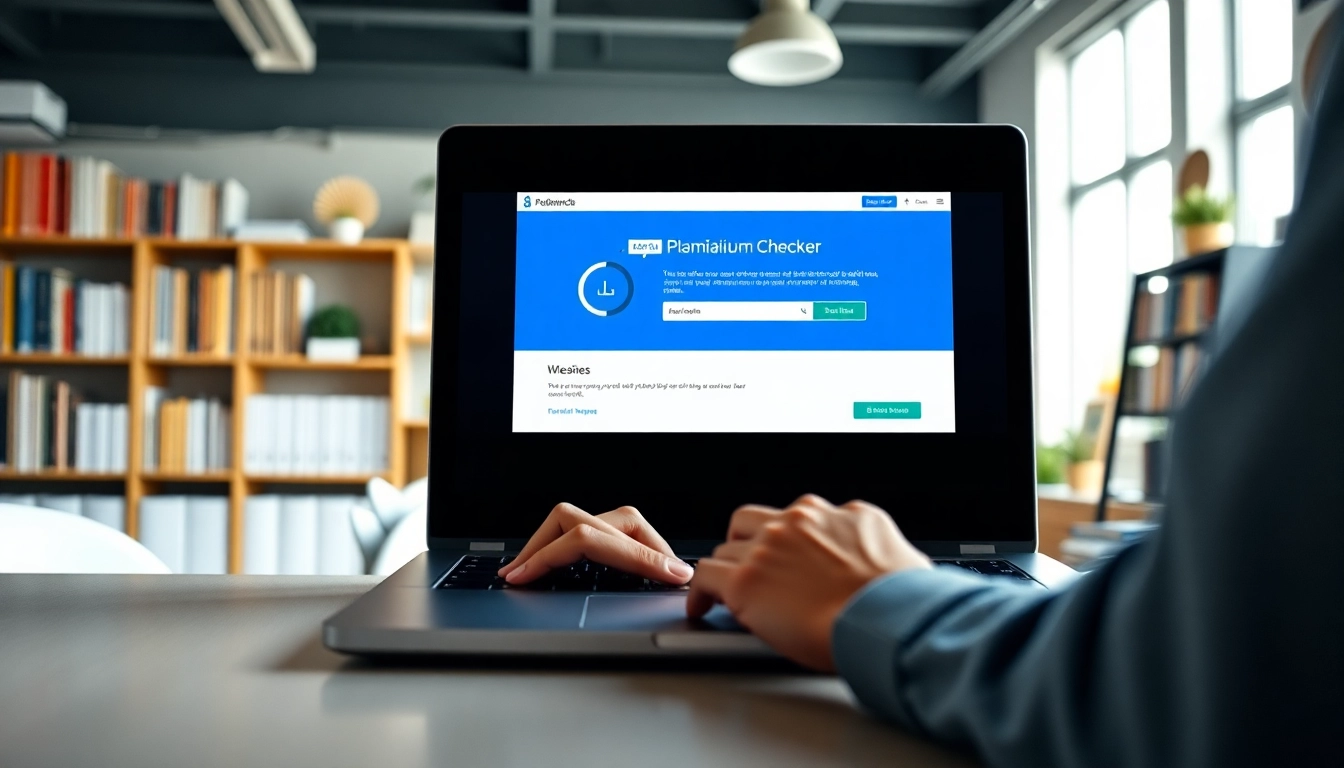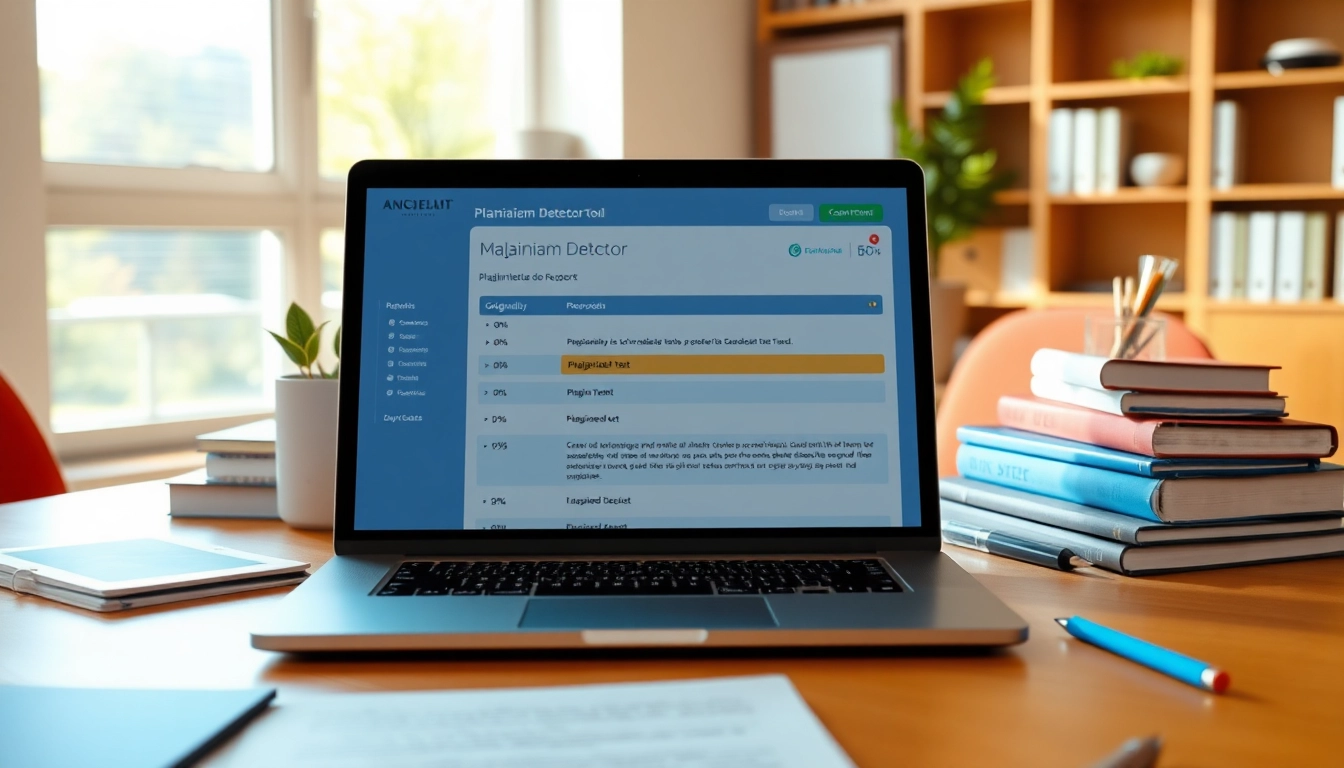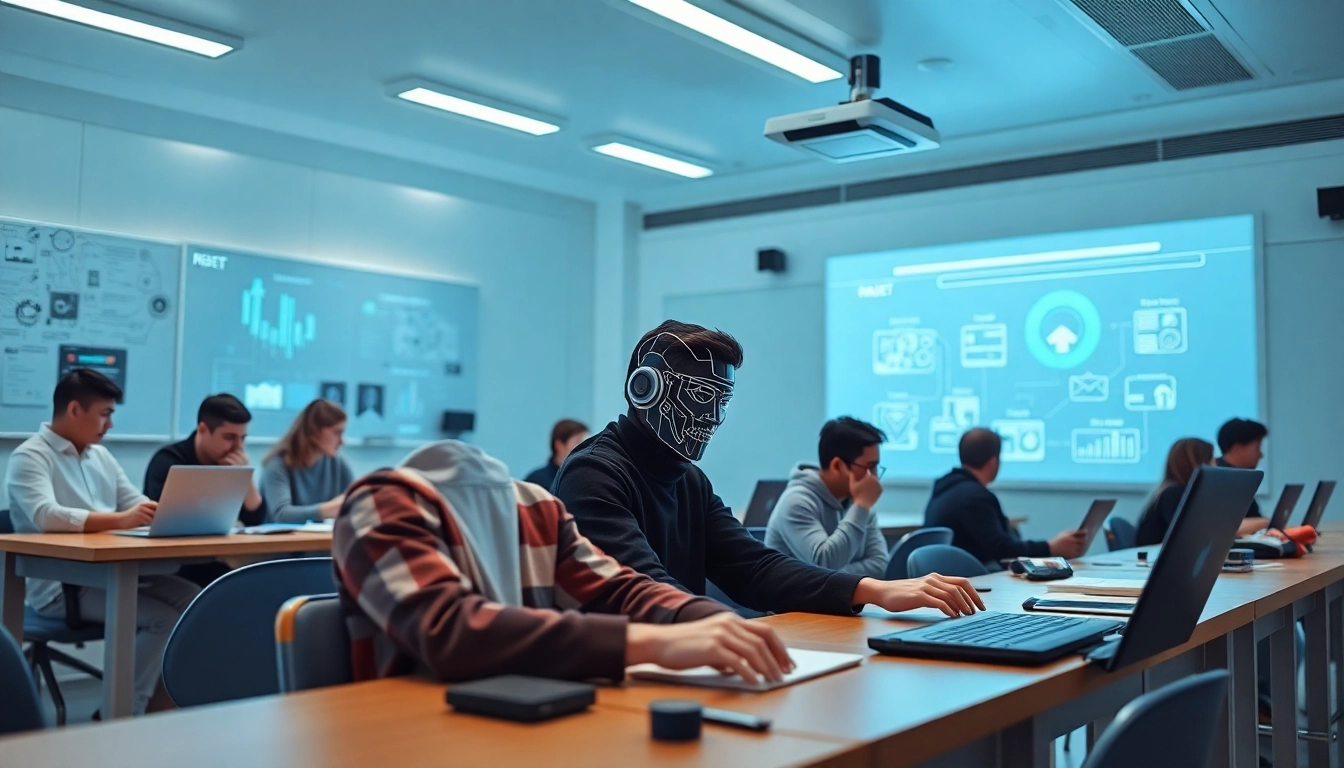Understanding Plagiarism Checkers
What is a Plagiarism Checker?
A plagiarism checker is a sophisticated tool designed to detect instances of plagiarism in text, documents, and various forms of written content. These tools compare submitted materials against a vast database of published works, academic papers, and web pages to identify direct matches or closely paraphrased content. In an age where originality and authenticity are highly prized, plagiarism checkers serve as essential resources for students, writers, and professionals to ensure their work maintains academic integrity and copyright compliance. The use of a reliable plagiarism checker can aid in safeguarding one’s reputation and credibility in their respective fields.
How Plagiarism Checkers Work
Plagiarism checkers utilize various methodologies to scan documents and detect duplicated content. These tools begin by analyzing the submitted text and breaking it down into smaller components, such as sentences and phrases. The algorithms then search through a database, which may include online articles, journals, academic papers, and books. Depending on the tool, this process may also involve:
- Fingerprinting: The software creates a unique fingerprint of the text, allowing it to detect similar structures and wording.
- Database Comparison: The checker compares the submitted content against its database to find matches or closely related phrases.
- Machine Learning Algorithms: Advanced tools leverage AI and machine learning to improve detection accuracy, learning from previous scans to enhance future results.
Once the analysis is complete, the checker generates a report highlighting sections that may exhibit plagiarism and provides links to the original sources, allowing users to refine or properly attribute their work.
Common Types of Plagiarism Detected
Plagiarism is not a one-size-fits-all concept; it manifests in several forms. Understanding the different types of plagiarism can aid users in becoming more vigilant about their practices. Common types include:
- Direct Plagiarism: Copying someone else’s work word-for-word without attribution.
- Self-Plagiarism: Reusing one’s previously published work without disclosure or citation.
- Paraphrasing: Rewriting someone else’s ideas or work in one’s own words but failing to give credit.
- Patchwork Plagiarism: Piecing together phrases and ideas from various sources to create a new work while retaining only minimal original content.
- Accidental Plagiarism: Unintentionally failing to cite sources accurately or misrepresenting the authorship of paraphrased material.
The Importance of Using a Plagiarism Checker
Academic Integrity and Originality
Academic institutions place significant emphasis on integrity and originality. Using a plagiarism checker can help students and researchers ensure that their work adheres to these principles. By verifying that their submissions are original and properly cited, individuals uphold the academic standards of honesty. This diligence not only reflects on the individual’s character but also affects the reputation of their institution. In competitive academic environments, demonstrating originality can distinguish successful candidates from peers.
Impacts on Writing and Creativity
Using plagiarism checkers can profoundly impact the writing process. Writers often benefit from understanding where their ideas converge with existing literature. This awareness fosters creativity by encouraging them to develop their unique voice and perspective rather than inadvertently replicating others’ work. Additionally, utilizing these tools can build confidence in the writer’s output, knowing it is free from plagiarism and can withstand scrutiny in a professional or academic setting.
Consequences of Plagiarism
The ramifications of plagiarism can be severe and far-reaching, affecting an individual’s academic and professional lifespan. Common consequences include:
- Academic Penalties: Students found guilty of plagiarism may face disciplinary actions ranging from failing grades to expulsion.
- Legal Repercussions: Plagiarism can lead to copyright infringement lawsuits, resulting in financial loss and damaged reputations.
- Professional Consequences: Writers or professionals caught plagiarizing may lose their jobs, face termination, or experience lasting harm to their career prospects.
- Damage to Credibility: Being labeled a plagiarist can irreparably damage an individual’s credibility and trustworthiness in their fields.
Top Plagiarism Checker Tools for 2023
Free vs. Paid Plagiarism Checkers
When evaluating plagiarism checkers, two main categories emerge: free and paid tools. Free plagiarism checkers offer basic functionalities, making them suitable for casual users or students managing small projects. However, they may connect with limited databases, providing less robust results. In contrast, paid plagiarism checkers often feature advanced algorithms, access to extensive databases, and detailed reports, thus catering to students, researchers, and professionals needing thorough analysis.
Comparative Analysis of Popular Tools
Several well-known plagiarism checkers dominate the market in 2023. Here’s a comparison of some top contenders:
| Tool | Free/Paid | Key Features | Rating |
|---|---|---|---|
| Grammarly | Free/Paid | Grammar check, plagiarism detection, style suggestions | 4.9/5 |
| Turnitin | Paid | Integration with academic institutions, comprehensive database | 4.8/5 |
| PapersOwl | Free | AI-powered detection, various file format support | 4.7/5 |
| Scribbr | Paid | Similar software to university checks, citation resources | 4.5/5 |
| DupliChecker | Free | Simple interface, quick checks | 4.4/5 |
Choosing the Right Tool for Your Needs
When selecting a plagiarism checker, consider the following factors:
- Purpose: Identify whether you need a tool for academic integrity, professional writing, or casual content creation.
- Budget: Assess if free tools meet your needs or if you require premium features offered by paid tools.
- Database Coverage: Evaluate the size and diversity of the database the tool connects to for comparison.
- User Experience: Look for tools that provide intuitive interfaces and easy-to-read reports.
Best Practices for Avoiding Plagiarism
Proper Citation Techniques
Proper citation is pivotal in avoiding plagiarism. Familiarizing oneself with various citation styles, such as APA, MLA, or Chicago, is essential for correctly attributing sources. Each style has specific rules regarding in-text citations and reference lists, which should be adhered to meticulously. Using citation management tools can streamline this process, enabling easier organization and formatting of references.
Effective Paraphrasing Strategies
Paraphrasing is a valuable skill that allows writers to convey ideas in their unique voice. Effective paraphrasing involves more than merely changing a few words; it requires a comprehensive understanding of the original text. Techniques include:
- Comprehension: Thoroughly understand the source material before rephrasing.
- Synonym Replacement: Substitute words with their synonyms while maintaining the original meaning.
- Sentence Restructuring: Alter sentence structure and order of ideas.
- Contextual Reinterpretation: Incorporate personal insights or context to differentiate your expression.
Using Quotation Marks Correctly
Whenever you directly quote someone else’s work, it is imperative to use quotation marks. Failing to do so can lead to allegations of plagiarism. Quoting effectively involves:
- Integrating Quotes: Seamlessly incorporate quotes into your writing to support your arguments.
- Citing Sources: Always attribute quotes to their original authors, including proper citation styles.
- Limiting Excess: Use quotes judiciously; they should enhance your writing rather than dominate it.
Future Trends in Plagiarism Detection
AI Innovations in Plagiarism Checking
As technology advances, the field of plagiarism detection is rapidly evolving. AI innovations have introduced more accurate detection algorithms, enabling tools to identify nuanced forms of plagiarism. This includes recognizing paraphrased content, understanding context, and even detecting unintentional plagiarism. As these capabilities improve, users can expect more reliable assessments of originality.
Incorporating User Feedback for Improvement
Continuous improvement is vital in plagiarism checkers. Tools that engage with user feedback can refine their algorithms and enhance the user experience. Incorporating feedback allows developers to address common shortcomings, improving detection accuracy and report clarity.
Potential Challenges Ahead
Despite advancements, plagiarism detection tools face challenges, including:
- Data Privacy: Users may be apprehensive about uploading their work to online checkers, fearing unauthorized access or data security breaches.
- Over-Reliance on Technology: Writers should be cautious not to rely solely on technology for originality. Human judgment and integrity are irreplaceable.
- Maintaining Relevance: As writing styles and communication practices evolve, plagiarism detectors must adapt to remain effective.



